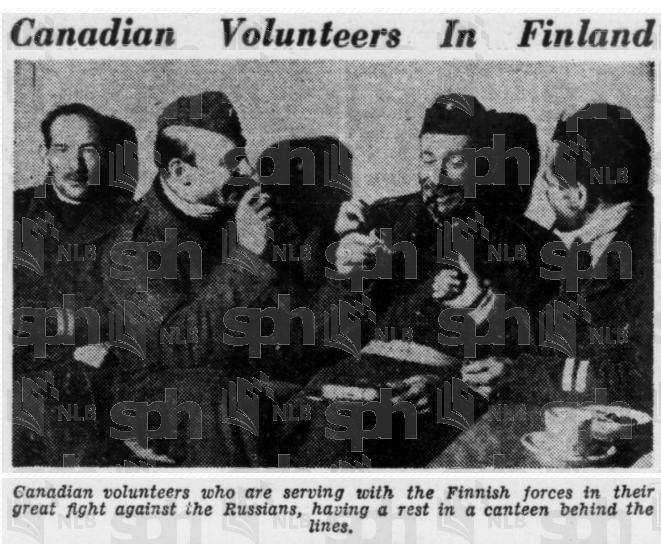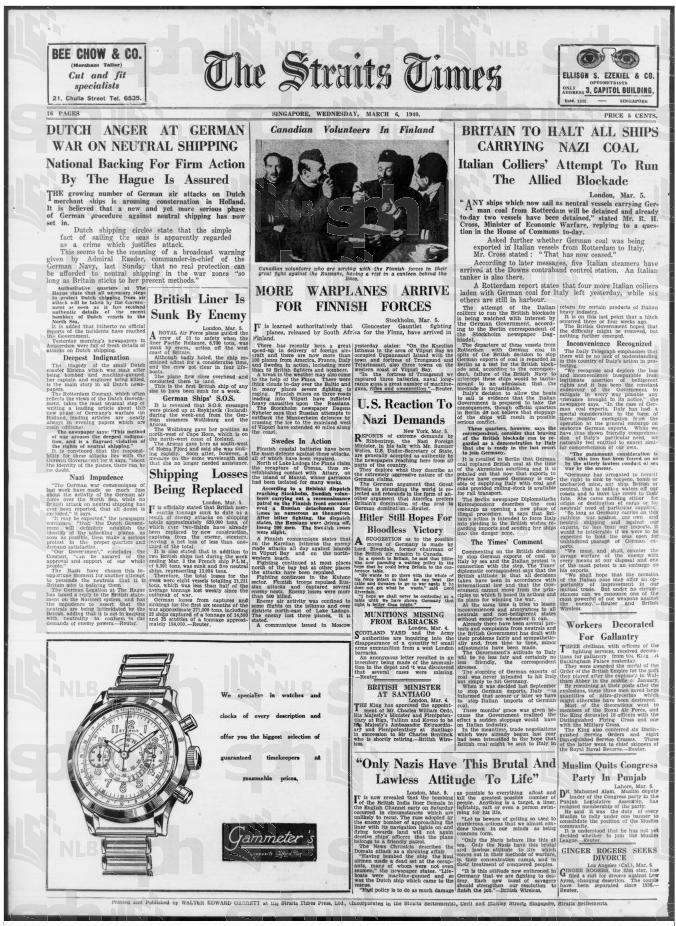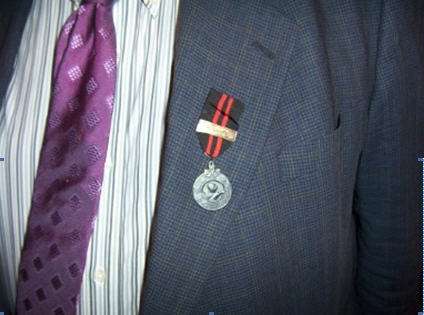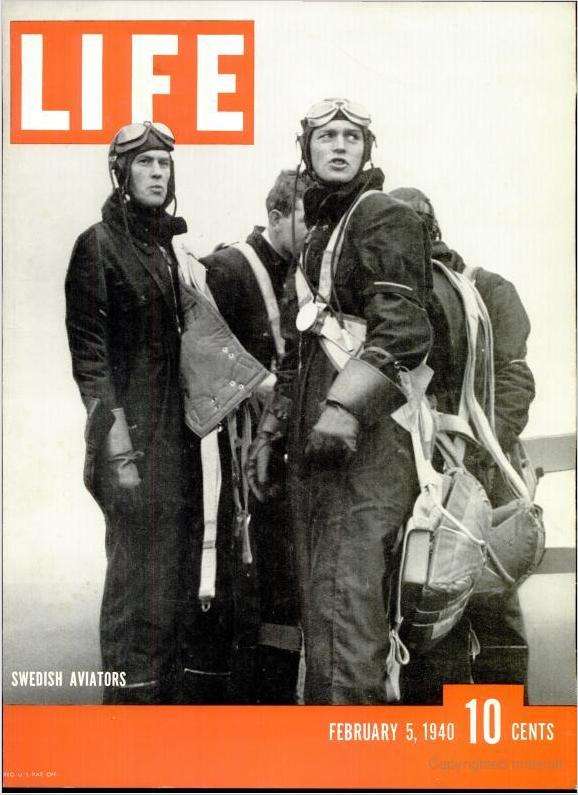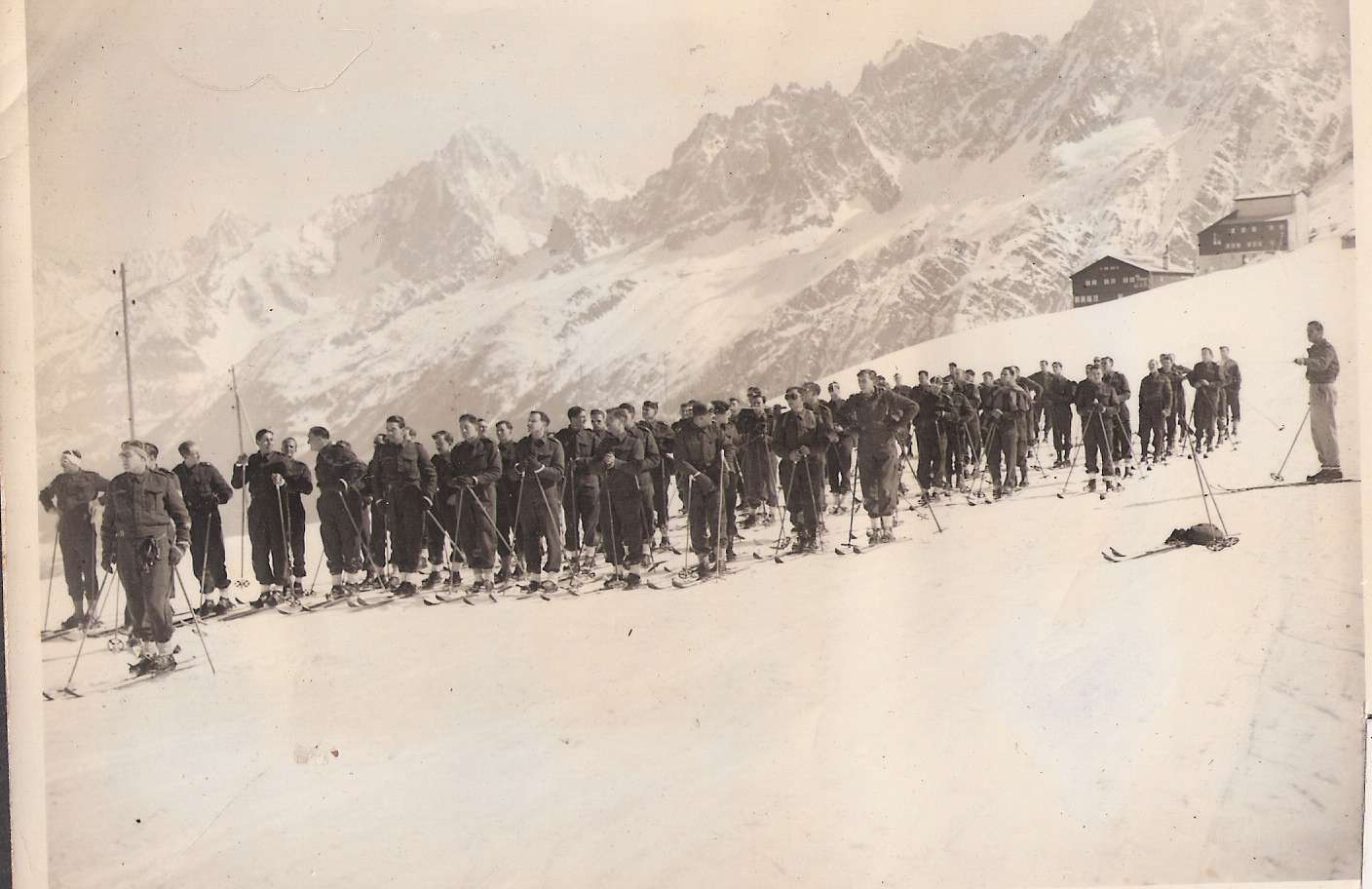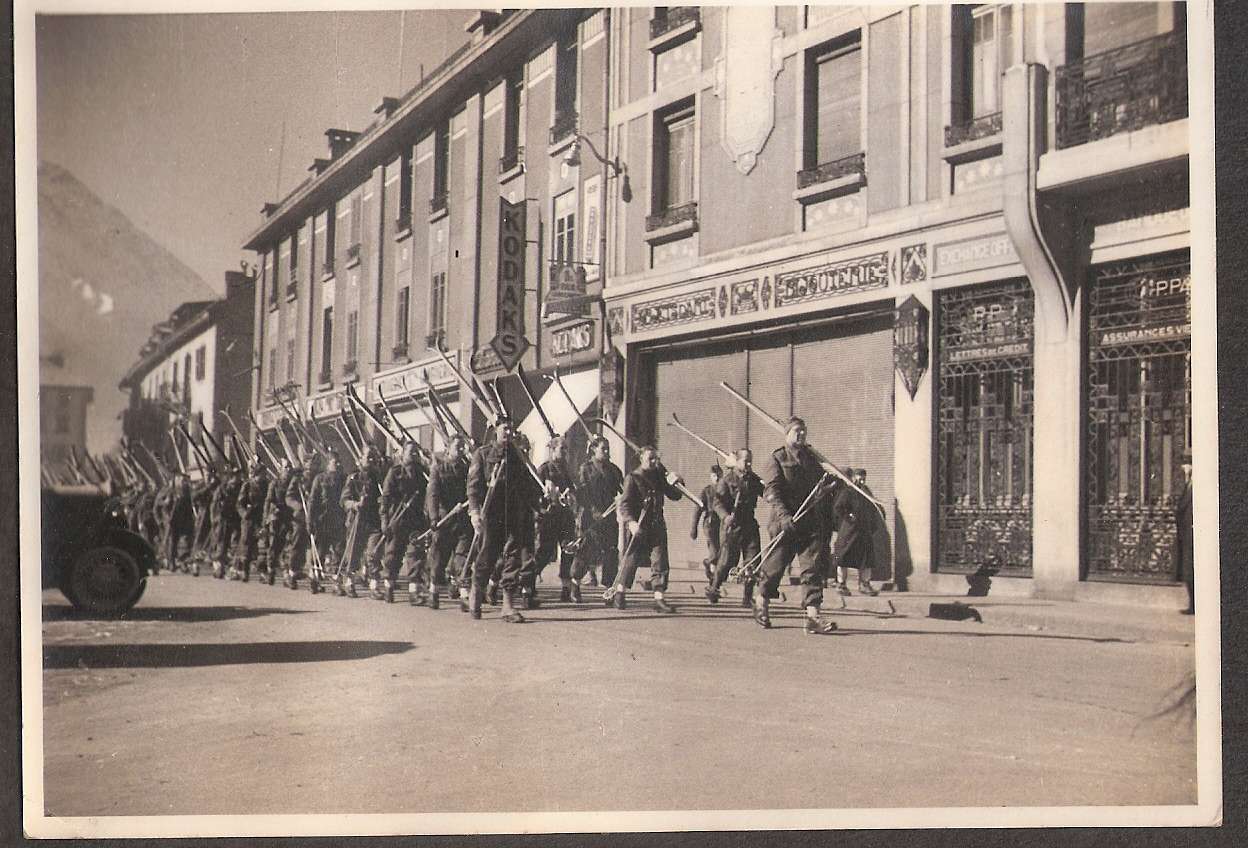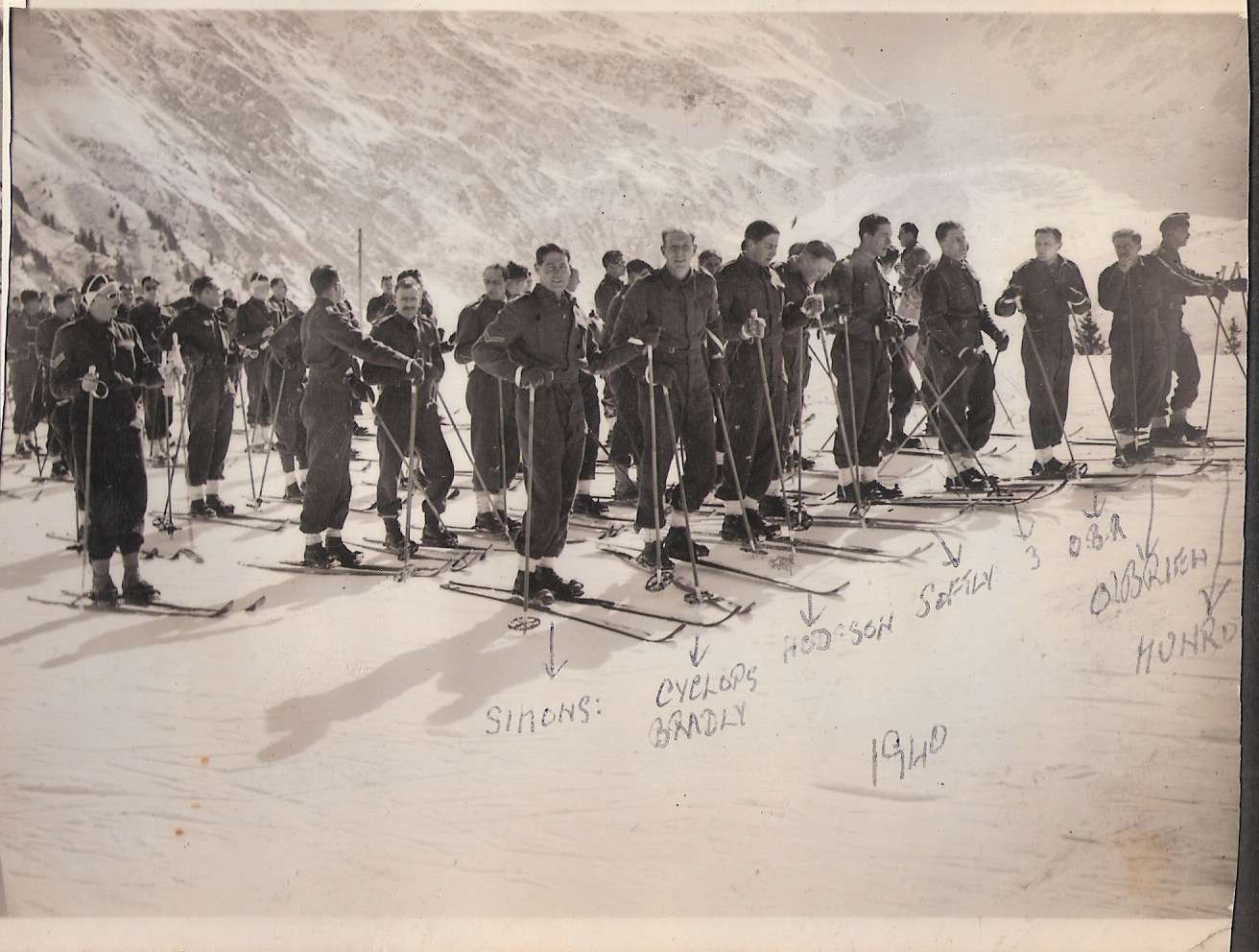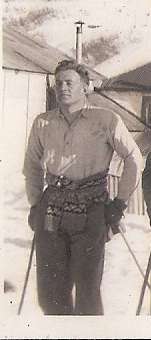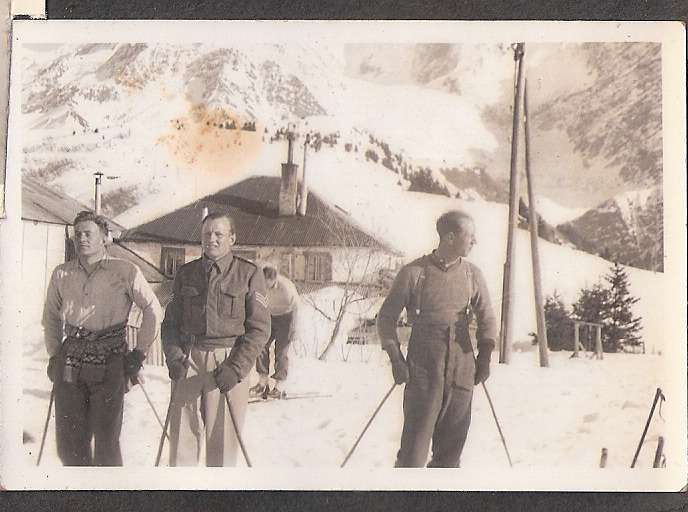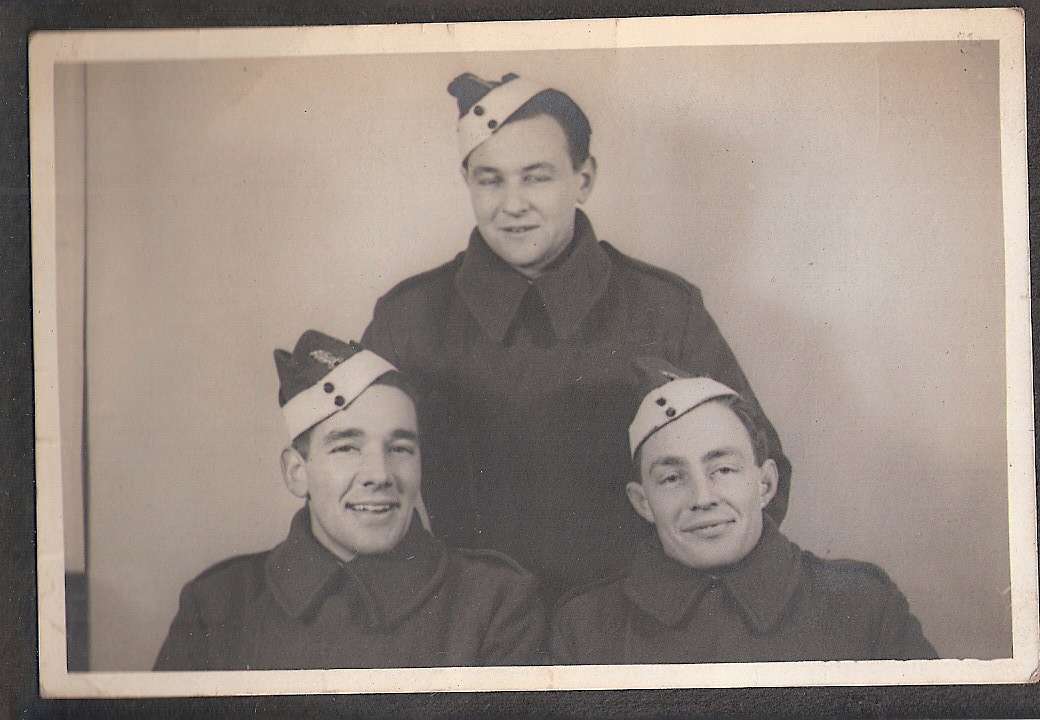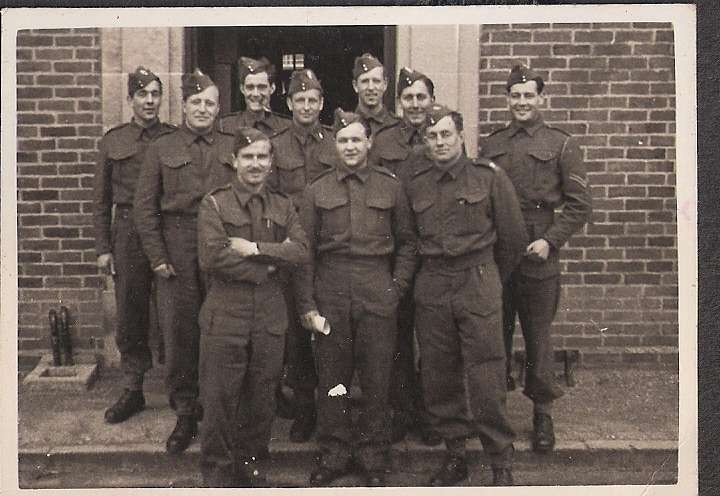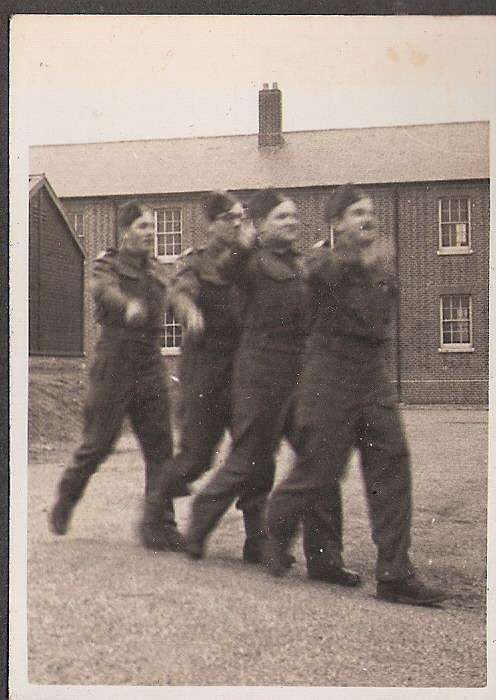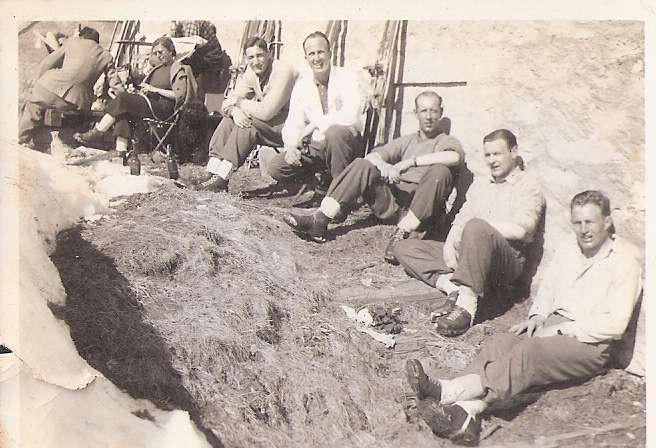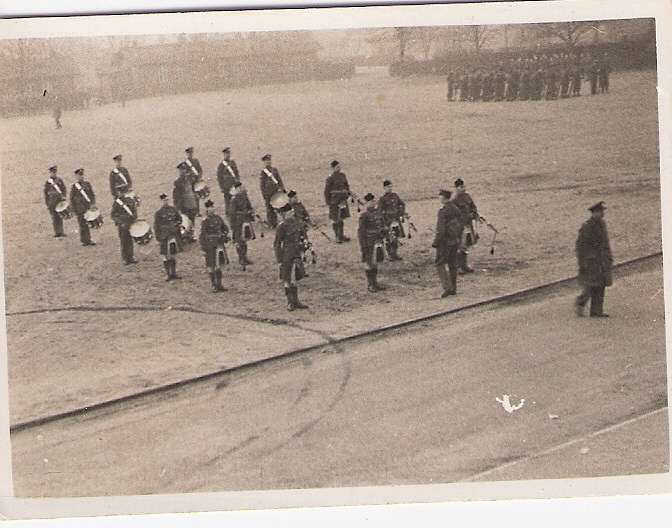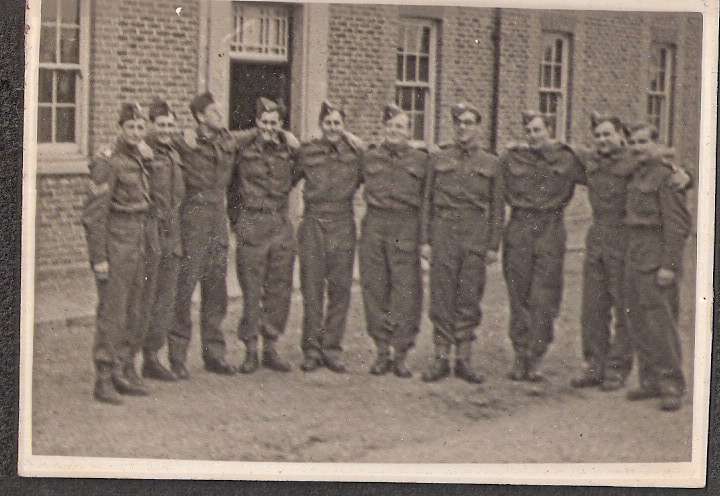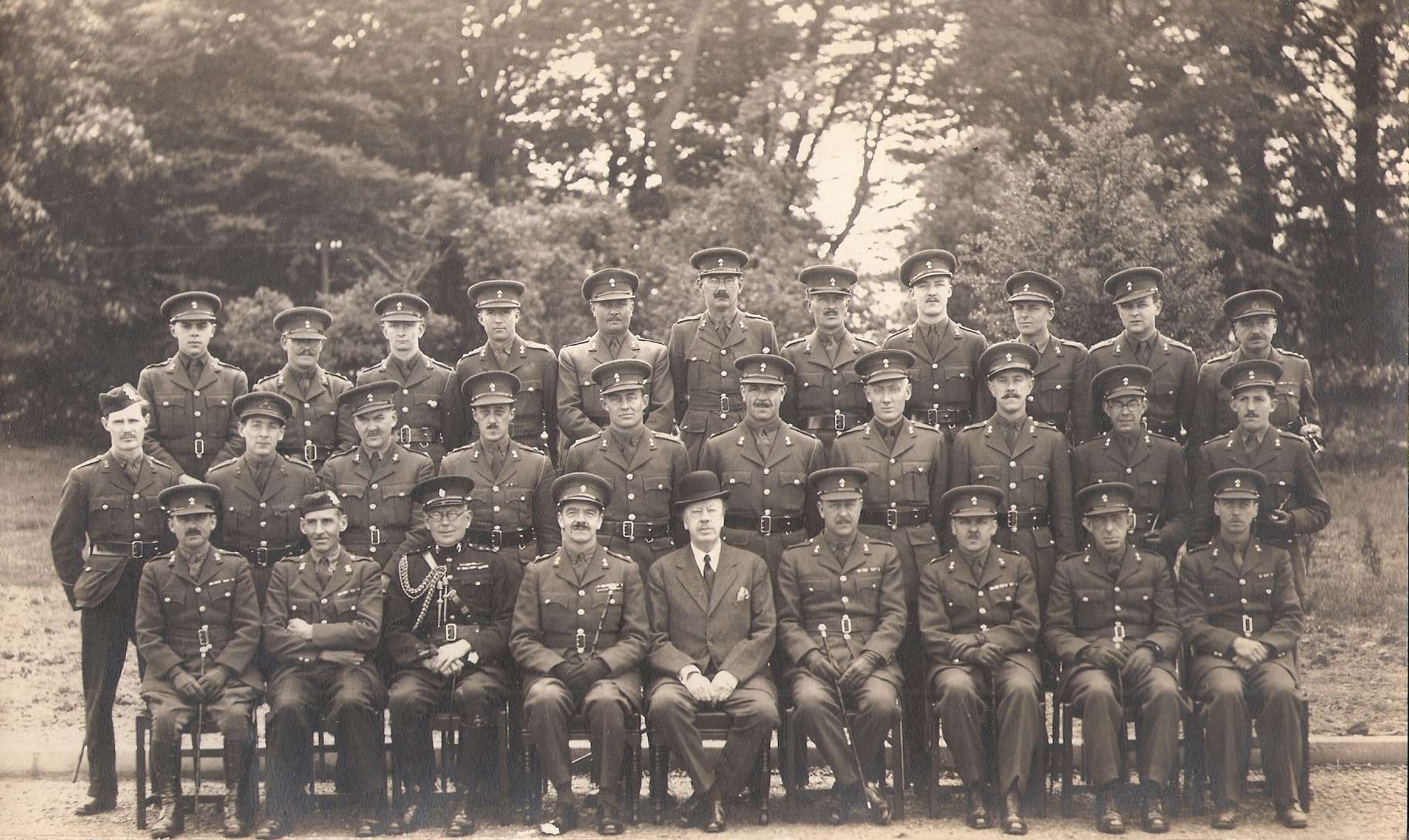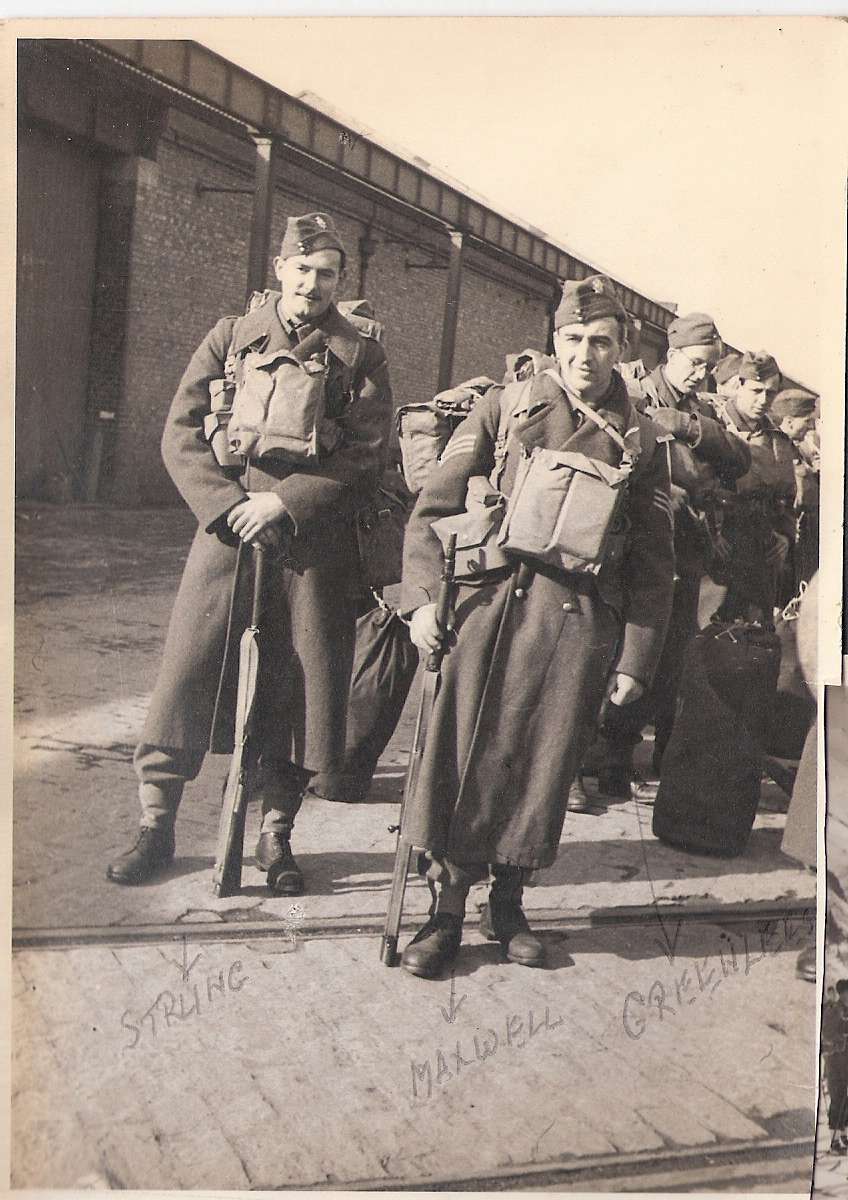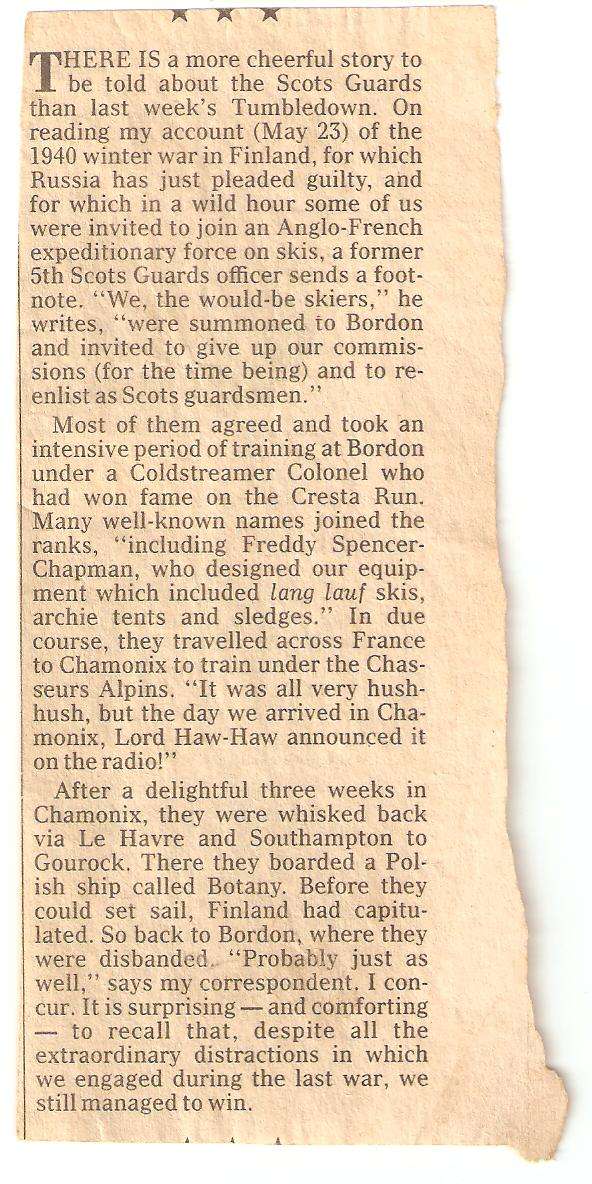#45
Post
by CanKiwi2 » 16 Mar 2012, 11:05
Here is some more information on the 5th Battalion that Chris Rooney has put together and made available. I have added a couple of additional comments (italicized).
Reading thru the list of names below, its a whos who of the founders of a number of British Special Forces units in WW2. There are all sorts of Interesting Characters in this battalion-- David and Bill Stirling, Bryan Mayfield. Cyril Rofé, Sir Rupery William John Clarke, Sir Ivar Iain Colquhoun, 8th Baronet--LIEUTENANT-COLONEL the 8th Lord Wynford, M ajor Charles Frederick Howard Gough, Earl Jellicoe (SAS / SBS), Brigadier James Michael Calvert (Chindits and SAS), Simon Christopher Joseph Fraser (Shimi Lovat).
An excerpt that Chris provided
If there was little to excite the martial appetites of Privates Mackay, Gunn and Campbell there was not much more going on in Europe. The months after Poland's flash bang defeat were strangely quiet. This was the surreal period known as the 'phoney war'. In April things changed dramatically; the Germans invaded Denmark and Norway. Denmark capitulated without a struggle. The Norwegians chose to fight. At the outset of war the British had foreseen a possible invasion of Norway. Accordingly, plans had been made to send aid in the form of a special force of skirmishers, trained to ski and fight harassing actions among the harsh Norwegian mountain terrain. These specialist fighters formed the 5th Scots Guards, the first Special Forces battalion of the war. Unfortunately, the British had perceived Russia to be the immediate threat to Norway. Come the end of the Russian - Finnish war, the 5th Scots Guards were disbanded, too late to reform in time to be any use in stalling the German advance into Norway. Nevertheless, 3,000 volunteers from English based TA units did go to Norway where they crossed swords with their German counterparts, the Mountain Division. Despite typical British heroics, it was a lost cause. The Germans had trained for years in the kind of specialist warfare the British were just beginning to learn. By June 10th, the last British troops had been evacuated from Norway. But Norway was now a minor sideshow; a much more serious disaster was in full swing.
Contributed by Major R F "Henry" Hall People in story: Major R.F. Hall Location of story: The world Background to story: Army Article ID: A4543670 Contributed on: 25 July 2005
Both armies withdrew from Norway and so did the BEF at Dunkirk. It was realised then that special troops were needed and so Gubbins ordered that a special battalion to be formed called the 5th Battalion, Scots Guards. In March and April 1940 they went to Chamonix to learn ski training prior to going back to Norway.
Then came ‘Operation Knife’ on 23rd April 1940. The party consisted of Bill Stirling, Bryan Mayfield and Jim Gavin. They went in a submarine called HMS Truant to attack communications in Norway. Unfortunately they hit a magnetic mine on the way there and had to limp back to Rosyth. The three of them went back to Keir, the Stirling home, to recover.
It was Bill Stirling’s idea to start the Irregular Warfare Training Centre to train guerrilla leaders. Lord Lovat requisitioned the whole area from Fort William to Mallaig. Gubbins got on to General Ironside, the GOC in C Home Forces and the formation of the Irregular Warfare Training Centre was authorised on 2nd June 1940.
The first courses were about 30 strong of Officers and Sergeants. They lasted three weeks and anybody who didn’t come up to scratch was returned to unit immediately. David Stirling, who eventually formed the SAS and Fitzroy MacLean, who joined David in the SAS and then went to Yugoslavia to help Tito settle the Balkan problem, both attended the first course. Fitzroy attended it in plain clothes (because he was not yet in the Army, he was still in the Foreign Office).
What were the courses like? First of all the staff, the instructors. The Commanding Officer was Bryan Mayfield of the Scots Guards, the Chief Instructor was Bill Stirling of the Scots Guards, the Assistant Chief Instructor was Freddie Spencer Chapman of the Seaforths, a Polar Explorer who eventually spent two years alone in Malaya helping the Chinese to fight the Japanese. Fieldcraft was taught by ‘Shimi’ Lovat of the Scots Guards and Lovat Scouts. He ended up commanding the Commando Brigade. The Assistant Fieldcraft instructor was Peter Kemp and later David Stirling of the Scots Guards. Bill and David were cousins of ‘Shimi’ Lovat. Demolitions were carried out by the famous Mike Calvert, Royal Engineers, who started off (again under Gubbins) the British Resistance Organisation and made a real name for himself in the Chindit campaign. Jim Gavin assisted him, he was an Everest climber. There was a Royal Naval contingent at the Big House under Commander Geoffrey Congreve DSO. His part of it was called HMS Lochailort.
A 5th Battalion had a brief existence as a Ski battalion, recruited from experienced volunteers, civilian and military, called for in telegrams despatched by the War Office all over the world. It was nicknamed “The Snowballers.” The life of this most odd unit spanned three months - January to March 1940 when it was disbanded. It had been intended for assisting the Finns but before it could be put to any use Finland had concluded an armistice with the USSR. The battalion did, however, get as far as Chamonix in the French Alps for training with a battalion of Chasseurs Alpins. This episode is most amusingly described.
Sir Archibald David Stirling, DSO, OBE volunteered to join the 5th Special Reserve Battalion, Scots Guards
also his cousin Maxwell
Cyclops Bradley
W A C Collingwood
Philip Pinckney
Simons
Hodgson
Softly
Hugh Munro
Anthony Hough
Greenlees
Guardsman Basil O'Brien
Gardsman Oswald Basil Micky Rooney
Sir David Carol MacDonnell Mather MC
Sir David Carol MacDonnell Mather MC joined the Welsh Guards at the outbreak of the Second World War in 1939, and attended Sandhurst. In February 1940, before his officer training was completed, Mather volunteered to join the 5th Special Reserve Battalion, Scots Guards. The battalion was formed in anticipation of supporting the Finland in the Winter War in 1939-1940, but the conflict ended before it left the UK. Mather returned to training with the Welsh Guards and was commissioned in March 1940. He volunteered for training at the Irregular Warfare Training Centre in Lochailort in October 1940,
WORLD WAR Two, 1939-45
Cyril Rofé: seldom feels strange in strange countries. Born in Cairo on April 11, 1916, he was educated at Clifton and Chillon College, trained for the hotel business at the Swiss Hotel School in Lausanne and, after a period at the May Fair Hotel in London, went to the Bristol, in Vienna, where he acquired a love of opera and skiing. He got out ten days after Hitler marched into Austria, and on the outbreak of war volunteered for aircrew. While waiting for training he joined the Scots Guards special ski battalion, which was intended for Norway, and when this was disbanded went into the Air Force and trained as an observer (navigator and bomb aimer). Short, wiry and always determined, he was in the crew of a Wellington bomber of No.40 Squadron which was shot down into the Maas Estuary on, June 11, 1941.
SIR RUPERT WILLIAM JOHN CLARKE - 1919-205 17/02/2005 12:00:08 AM - where he digressed by volunteering for a ski battalion to fight the Russians. He trained in Chamonix, Mont Blanc with the Chasseurs Alpins as part of 5 Battalion Scots Guards. After a further stint at Sandhurst he was commissioned a 2nd Lieutenant in 1st Battalion. At home the 5th Battalion was raised in 1940 as a ski battalion to fight against the Russians in Finland, but after training in France it was disbanded.
Sir Ivar Iain Colquhoun, 8th Baronet, When the Soviet Union invaded Finland in November 1939, he was seconded to the 5th (Ski) Battalion Scots Guards.
LIEUTENANT-COLONEL the 8th Lord Wynford Early the next year, he took over as Signal Officer, 1 RWF, at Mouchin, close to the border of France and Belgium; but then in February he answered the request for volunteers to form a ski battalion - the 5th (SR) Battalion, the Scots Guards - to defend Finland against the invading Red Army. This was a unit composed of experienced skiers and mountaineers, all of whom had to resign their commissions in order to join. However, when neutral Sweden refused the British permission to cross their territory into Finland - and after snow-training at Chamonix - the unit was disbanded. (When the Soviet Union invaded Finland in November 1939, he was seconded to the 5th (Ski) Battalion Scots Guards. This was disbanded after Finland was forced to accept Russian terms in March 1940).
Major Charles Frederick Howard Gough - When the Second World War began, Gough was recalled from the Territorial Army Reserve of Officers and as a Captain rejoined the London Rifle Brigade, posted to H Company of the 2nd Battalion. However two months after the Russian invasion of Finland in December 1939, the British government expressed a desire of lending clandestine support to the Finns, and so Gough left the London Rifle Brigade in favour of the 5th (Ski) Battalion of the Scots Guards. This was an experimental unit, a factor which no doubt attracted the adventurous Gough who was not in the least deterred by obligatory loss of rank, and it consisted entirely of volunteers who were experienced in skiing and mountaineering. Needless to say this unit attracted a wide range of characters who went on to achieve distinction with such pioneering units as the Chindits and the SAS; among them was David Stirling, the founder of the Special Air Service. After a period of intense training and a brief spell in the French Alps, it was planned that the force would be posted to Norway in March, from where they would make their way to Finland to help fight the Soviet invasion. However on the eve of setting sail there came the news that the situation in Finland was fast becoming hopeless, and so the operation was cancelled.
Earl Jellicoe - suddenly found that there was a chance of joining the 5th Scots Guards, which was a skiing battalion, aiming eventually at Finland, to support the Fins against the Germans. Crazy idea, you know, we were going to send… well you can check on that, I don’t know, but it was the best part of a brigade, including a ski battalion, and I was a keen skier so I joined the ski battalion. We had a marvellous time. Two or three weeks in Chamonix. And I’ll always remember going out in Chamonix as a guardsman, had a lot of people in who were Lieutenants and things and a lot of people keen to join and they were quite prepared to go down to a non-commissioned, in the ranks.
J: But you were commissioned were you, straight away?
EJ: No, no. I was a guardsman. I joined straight from Sandhurst as it were. Never finished my time at Sandhurst. I remember the trip out to Chamonix very well. And I think that people who had been interested in that would easily have known where we were because the champagne bottles were strewn along the railway line. Rather like the Russian fleet going out in 1905 round the cape to take on Kyoto in 1905, the sea was full of champagne bottles then. In any case I then joined the training battalion, Coldstream. Then [?] myself, which I didn’t like one little bit, in the holding battalion at Regent’s Park when the battle of France was going on. And I found that extremely…
J: Why, because you wanted to be in France?
EJ: Yes. It was rather ghastly what was going on there I was pootling along in a holding battalion. And one tended to go out later and later at night to the Bag of Nails and that sort of thing. And eventually I got confined to barracks and that coincided with the formation of the commandos and the possibility of joining the commandos. I’ll always remember going for my interview with that with Bob Laycock who commanded…
Brigadier James Michael Calvert (1913-98) -and the Chindits: In 1938 he returned to London and resigned his commission in 1939 in order to join the 5th Ski Battalion of the Scots Guards, due to fight the Russians in Finland. After six weeks hectic training, they embarked on a troopship in Glasgow but before sailing the Finns surrendered and the mission was abandoned.............. On recovery, he did not return to India but in January 1945 took over command of the Special Air Service (SAS) Brigade, then based near Colchester. This force included a number of French and Belgians, many of whom had been in the French Foreign legion. They were individualists, albeit good soldiers and it took all of Calvert's skill to bring order and discipline into a very diverse force.
Following the end of the war in Europe on 8th May 1945, the French and Belgian units within the SAS returned to their own countries and Calvert led a small force to Norway to help supervise the German surrender in that country. During the Malayan war against the Communist insurgents, Calvert would create the Malaya Scouts and more or less resurrect the SAS before being invalided back to the UK.
Brigadier Simon Christopher Joseph Fraser, 15th Lord Lovat DSO, MC, TD (9 July 1911 - 16 March 1995) was the 25th Chief of the Clan Fraser and a prominent British Commando during the Second World War. His friends called him "Shimi" Lovat, an anglicised version of his name in the Scottish Gaelic language. His clan referred to him as MacShimidh, his Gaelic patronym, meaning Son of Simon. Simon is the favoured family name for the Chiefs of Clan Fraser. He is commonly known as the 15th Lord Lovat.
Shimi. "Shimi Lovat, Churchill explained, on taking charge of Combined Operations, had at once got rid of Evelyn. This abrupt liquidation, arising from some ...
Captain Frank A L Waldron was called up for the Scots Guards 5th Ski battalion which existed Jan - Mar 1940. He then was in the 2nd battalion and sent to the middle east. Apparently wayward unconventional officers ended up in the 2nd. On March 6 1943 he was involved in the Battle of Medenine. He returned to Scotland before joining the Amoured division in Jan 1945.
The 7th Marquess Townshend: Lord Townshend joined the Suffolk and Norfolk Yeomanry in 1936, and was an ADC to General Sir Edmund Ironside as GOC Eastern Command. In 1940 he transferred to the Scots Guards and volunteered for its ski battalion, which was formed to fight the Russians in Finland, after training at Chamonix; but neutral Sweden refused permission for British troops to cross its territory, and the unit was swiftly disbanded.
William Fox (William Hubert Fox), actor, born January 26 1911; died September 20 2008 Versatile actor and connoisseur of the civilised life His war began with a ski battalion earmarked for Finland and its "winter war" against the Soviet Union. He enjoyed ski training at Chamonix in France but, following the March 1940 Finnish-Soviet armistice, he was sent to northern France with the British Expeditionary Force, only to be evacuated from Dunkirk that May.
Frederick Spencer Chapman 1907-71. Return to school, now at Gordonstoun, did not last for long. With the war, Freddy was commissioned in the Seaforth Highlanders and was attached to the Ski Battalion of the Scots Guards. This led to training at Chamonix. After a spell as instructor at the S.O.E. training centre at Arisaig he was posted to a Commando School in Australia, then in 1941 to Singapore. (Chapman was a famous mountaineer, In Singapore, he escaped and fought a guerilla war in Malaya for years - after the war he wrote a well-known book on guerilla warfare, The Jungle is Neutral - bit of a textbook on the subject)
After being disbanded in March 1940, many of the men that had been in the 5th would go on to serve in the Independent Companies that Gubbins raised for Norway, as well as in the early Special Forces - see below
The Special Training Centre at Lochailort in the Scotish Highlands was set up by MI(R) in 1940 almost by accident. A six-man team that should have deployed to Norway was forced to return to Scotland when their submarine HMS Truant was damaged by enemy action and their mission overtaken by events in Norway (Operation KNIFE).
The team consisted of the fiollowing personnel:
Lt Col Bryan Mayfield - Scots Guards
Peter Kemp
Bill Stirling - Scots Guards
Jim Gavin -RE
Ralph Farrant
David Stacey
Mayfield and Stirling suggested that a training school be set up to enable the team's experise to be passed on to others, this plan was given immediate approval by MI(R). Initially the team set up shop at the Stirling Estate of Keir, but Bill Stirling decided that a more remote location was necessary and settled on Lochailort.
Other staff were collected from the 5th Bn Scots Guards a strange hybrid unit designed for operations in Finland consisting mainly of officers, NCOs and civilians with mountain or ski-ing experience, from here came Martin Lindsay and Freddy Spencer Chapman pre-war Arctic explorers. Lord Lovat was recruited as an instructor, and tradition locally states that Shimie Lovat selected Inverailort as a base in May 1940.
The original M/E* of the Special Training Centre consisted of 203 personnel which could cater for the training of 100 officer and 500 other ranks at any one time, in the establishment there were 55 instructors - including some civilians who had special experience including some Highland ghillies who taught fieldcraft, there was also a mule and pony section with staff to look after them, by June the scheme had been increased by adding another 27 instructors and futher
admin staff which enabled training numers of 150 officer and 2,500 other ranks.
Among the names who passed through either as trainees or instructors were David Niven of the Rifle Brigade, David Sutherland, Fitzroy Maclean, Arthur Kellas, Hugh Stockwell, Anthony Quayle and Mike Calvert. Captain P A Walbridge and Cyril Mackworth Praed were both weapons instructors. Also present were arctic explorers Andrew Croft, Jimmy Scott and the veteran explorer George Murrat Levick who had been on the Scott Polar expedition. In June David Stirling became an
instructor in the fieldcraft wing. The climber Sandy Wedderburn taught climbing techniques. Mike Calvert was a demolitions instructor. Fairbairn and Sykes were also on the roster as CQB instructors who while at Lochailort designed the F/S fighting knife, the famed Commando dagger an emblem of the Commandos to this day.
The Signals Wing at Lochailort included Peter Fleming and a trio of Sergeants, Bryant, Beriff, and Austen the first two had deployed to Norway as the signals element of Operation KNIFE with Fleming in command.
Later a Special Wing was added for the training of foreign troops including Poles, French, and Dutchmen.
Lochailort also ran a 30 day course for assault troops a precusor to the Battle Schools that were formed later in the war.
The names mentioned above went on to impart Lochailort's lessons and philosophy to such units as the Commandos, Parachute Regiment, SAS, Chindits, Auxiliary Units and SOE - Lochailort can truely be considered the birthplace of many of Britain's SF during WWII.
*M/E - Military Establishment - the number of troops allowed to a unit split down into specialities - with the M/E number a commanding officer could have people, equipment and pay allocated to him.
ex Ngāti Tumatauenga ("Tribe of the Maori War God") aka the New Zealand Army
